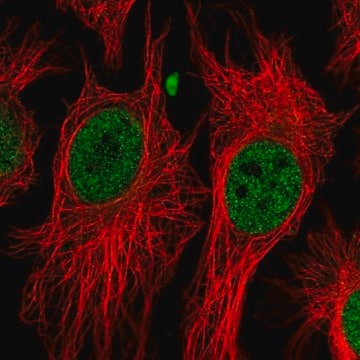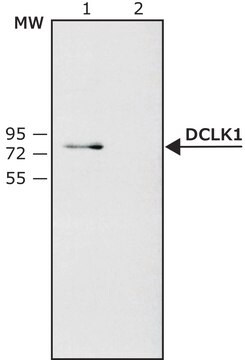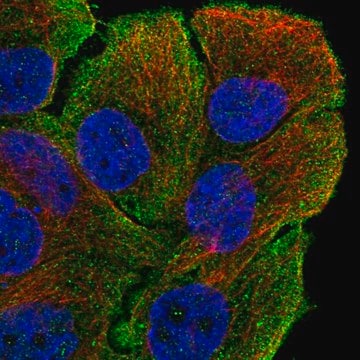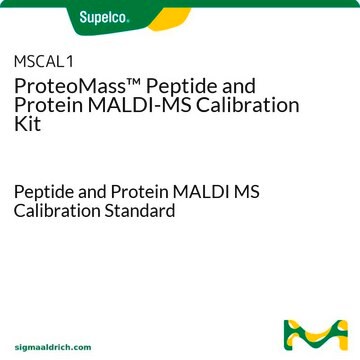ABN1388
Anti-MUL1
from rabbit, purified by affinity chromatography
Synonim(y):
Mitochondrial ubiquitin ligase activator of NFKB 1, E3 SUMO-protein ligase MUL1, E3 ubiquitin-protein ligase MUL1, Growth inhibition and death E3 ligase, Mitochondrial-anchored protein ligase, MAPL, Putative NF-kappa-B-activating protein 266, RING finger
About This Item
Polecane produkty
pochodzenie biologiczne
rabbit
Poziom jakości
forma przeciwciała
affinity isolated antibody
rodzaj przeciwciała
primary antibodies
klon
polyclonal
oczyszczone przez
affinity chromatography
reaktywność gatunkowa
human
reaktywność gatunkowa (przewidywana na podstawie homologii)
rhesus macaque (based on 100% sequence homology)
opakowanie
antibody small pack of 25 μg
metody
immunohistochemistry: suitable (paraffin)
western blot: suitable
numer dostępu NCBI
numer dostępu UniProt
Warunki transportu
ambient
docelowa modyfikacja potranslacyjna
unmodified
informacje o genach
human ... MUL1(79594)
Opis ogólny
Specyficzność
Immunogen
Zastosowanie
Neuroscience
Jakość
Western Blotting Analysis: 0.5 µg/mL of this antibody detected MUL1 in 10 µg of human skeletal muscle tissue lysate.
Opis wartości docelowych
Postać fizyczna
Przechowywanie i stabilność
Inne uwagi
Oświadczenie o zrzeczeniu się odpowiedzialności
Not finding the right product?
Try our Narzędzie selektora produktów.
Kod klasy składowania
12 - Non Combustible Liquids
Klasa zagrożenia wodnego (WGK)
WGK 1
Certyfikaty analizy (CoA)
Poszukaj Certyfikaty analizy (CoA), wpisując numer partii/serii produktów. Numery serii i partii można znaleźć na etykiecie produktu po słowach „seria” lub „partia”.
Masz już ten produkt?
Dokumenty związane z niedawno zakupionymi produktami zostały zamieszczone w Bibliotece dokumentów.
Nasz zespół naukowców ma doświadczenie we wszystkich obszarach badań, w tym w naukach przyrodniczych, materiałoznawstwie, syntezie chemicznej, chromatografii, analityce i wielu innych dziedzinach.
Skontaktuj się z zespołem ds. pomocy technicznej








